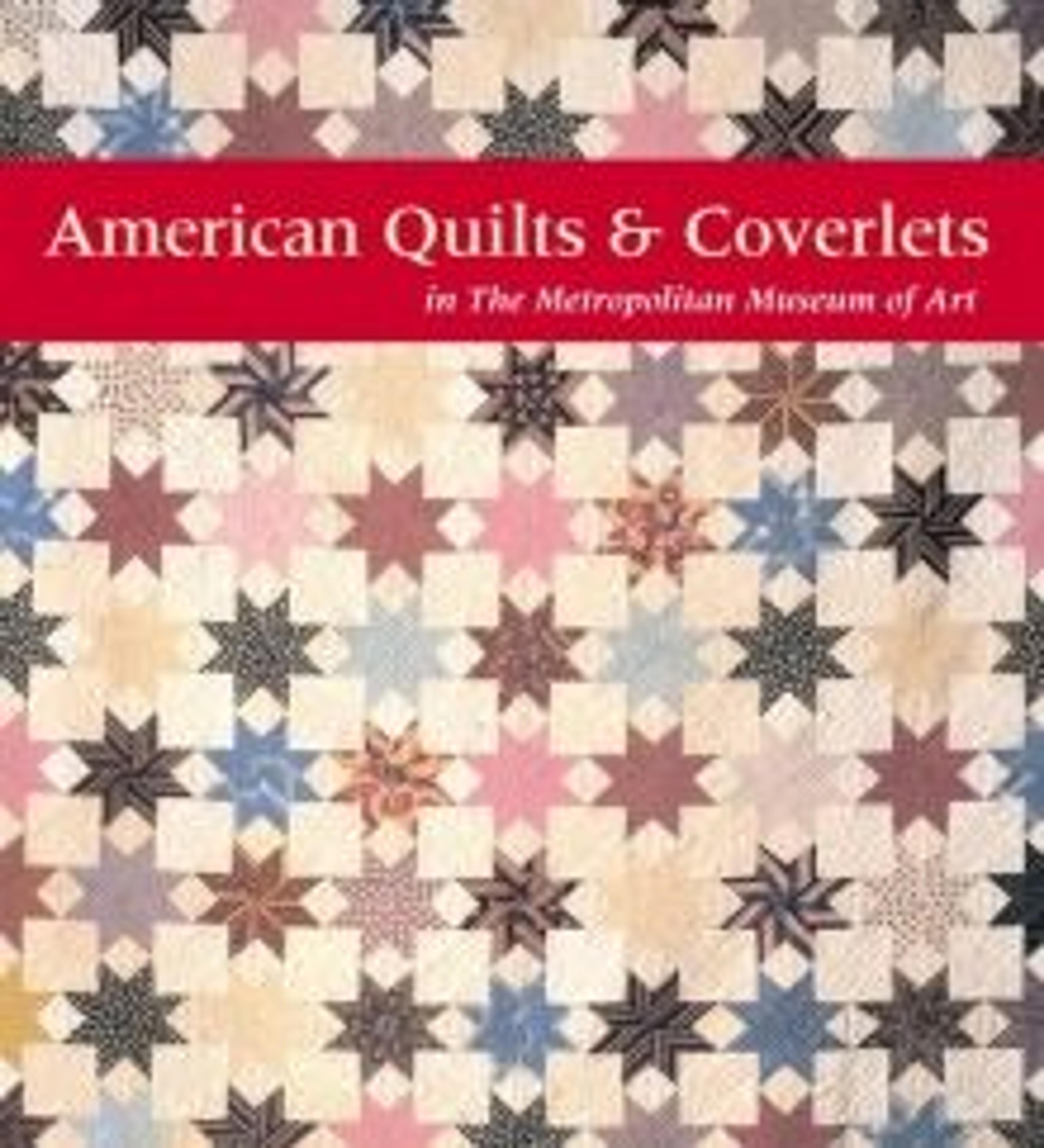Star of Bethlehem Quilt
This unusual quilt illustrates the transition that took place in the mid-nineteenth century, when repeating block patterns began to take precedence over centrally focused quilt designs. Although the large Star of Bethlehem motif in the middle remains the principal focus, the use of blocks with smaller stars in the border signals the approach of the new style. Quilts worked in blocks gained popularity over those with large centralized designs for a variety of reasons. One highly probable factor is that blocks of about twelve-inches square or smaller, which are easily transportable, made it possible for women to work on a section of their quilt while visiting with friends. Although leisure time was on the rise in nineteenth-century America, a woman was still expected to fill most of her hours with some type of work that benefited her family; and the supposedly nonproductive activity of friendly visiting became acceptable when accompanied by sewing.
Another possible reason for the ascendancy of pieced-block patterns over appliquéd designs, which often depended on English chintzes for their decoration, stems from the rise of the printed cotton industry in the United States. By the 1830s, colorful printed cottons made in America were widely available, quite inexpensively and in great variety. In 1836, American mills manufactured some 120 million yards of these fabrics. Traditionally, it has been thought that American quilts were made from scraps of leftover cloth pieced together by thrifty housewives. In fact, there is much evidence within the quilts themselves—for example, in those that employ large panels of previously unused fabrics—to support a theory that many women bought new fabrics for their quilts. Pieced-block patterns made it possible to display a great number of the latest brightly colored American cottons.
The diamond-shaped pieces that form the stars on this quilt had to be joined with great precision, since uneven stitching would have prevented the stars from lying flat. The arrangement of the different colored fabric pieces within the stars was, of course, also a matter of major concern. At first glance, all the smaller stars appear identical in their color progression: They all start with a red center, as is traditional in Star of Bethlehem quilts, and radiate outward in rings of tan, brown, blue, red, tan, and red. One, however, is different: In the middle star of the bottom border, the red center is surrounded by rings of blue, brown, tan, red, tan, and red. Its color scheme, alone among those of all the small stars, repeats the scheme of the large central star. Was this irregularity intentional, or was the block contributed by a different sewer, or did the rigors of piecing so many diamonds cause the quiltmaker to slip?
Another possible reason for the ascendancy of pieced-block patterns over appliquéd designs, which often depended on English chintzes for their decoration, stems from the rise of the printed cotton industry in the United States. By the 1830s, colorful printed cottons made in America were widely available, quite inexpensively and in great variety. In 1836, American mills manufactured some 120 million yards of these fabrics. Traditionally, it has been thought that American quilts were made from scraps of leftover cloth pieced together by thrifty housewives. In fact, there is much evidence within the quilts themselves—for example, in those that employ large panels of previously unused fabrics—to support a theory that many women bought new fabrics for their quilts. Pieced-block patterns made it possible to display a great number of the latest brightly colored American cottons.
The diamond-shaped pieces that form the stars on this quilt had to be joined with great precision, since uneven stitching would have prevented the stars from lying flat. The arrangement of the different colored fabric pieces within the stars was, of course, also a matter of major concern. At first glance, all the smaller stars appear identical in their color progression: They all start with a red center, as is traditional in Star of Bethlehem quilts, and radiate outward in rings of tan, brown, blue, red, tan, and red. One, however, is different: In the middle star of the bottom border, the red center is surrounded by rings of blue, brown, tan, red, tan, and red. Its color scheme, alone among those of all the small stars, repeats the scheme of the large central star. Was this irregularity intentional, or was the block contributed by a different sewer, or did the rigors of piecing so many diamonds cause the quiltmaker to slip?
Artwork Details
- Title:Star of Bethlehem Quilt
- Date:ca. 1845
- Geography:Possibly made in New York, United States
- Culture:American
- Medium:Cotton
- Dimensions:90 x 89 1/4 in. (228.6 x 226.7 cm)
- Credit Line:Gift of Mr. and Mrs. Samuel Schwartz, 1973
- Object Number:1973.64
- Curatorial Department: The American Wing
More Artwork
Research Resources
The Met provides unparalleled resources for research and welcomes an international community of students and scholars. The Met's Open Access API is where creators and researchers can connect to the The Met collection. Open Access data and public domain images are available for unrestricted commercial and noncommercial use without permission or fee.
To request images under copyright and other restrictions, please use this Image Request form.
Feedback
We continue to research and examine historical and cultural context for objects in The Met collection. If you have comments or questions about this object record, please contact us using the form below. The Museum looks forward to receiving your comments.
